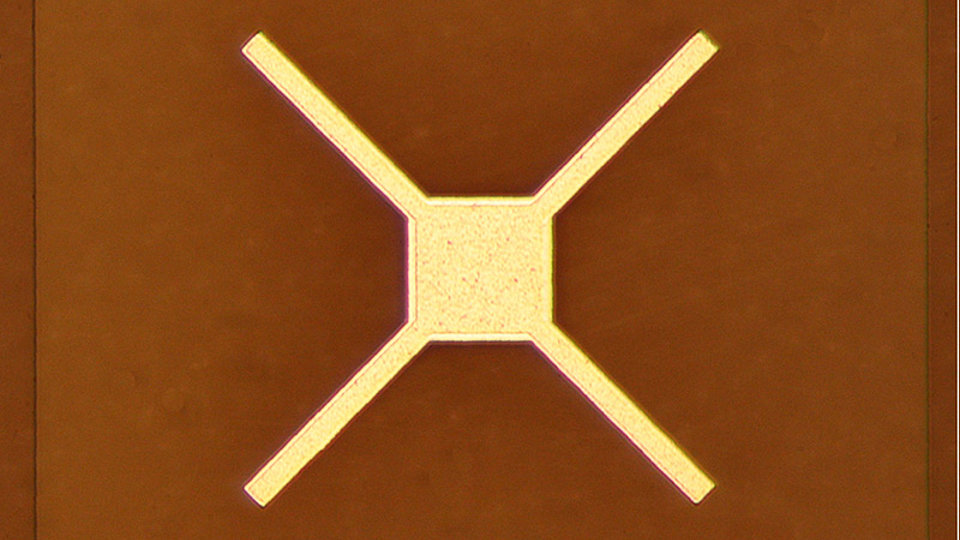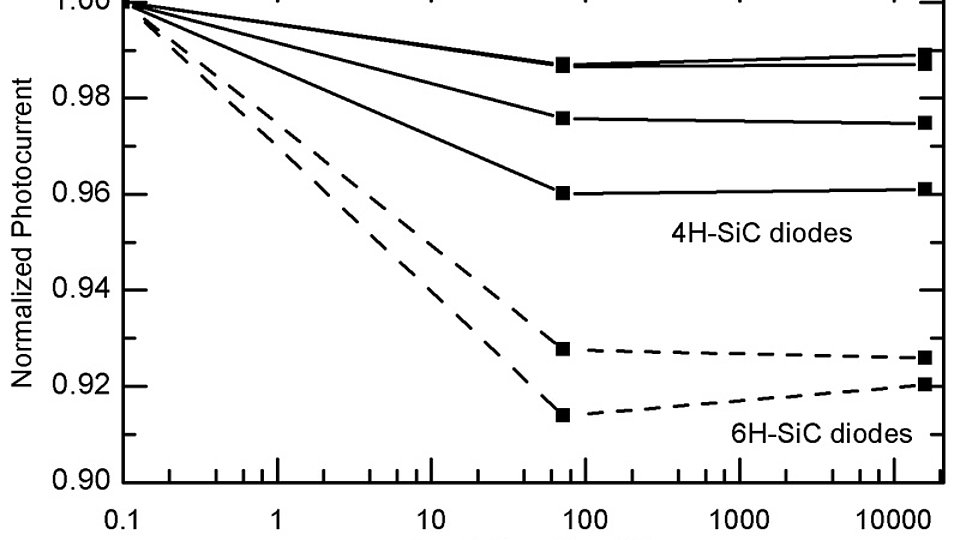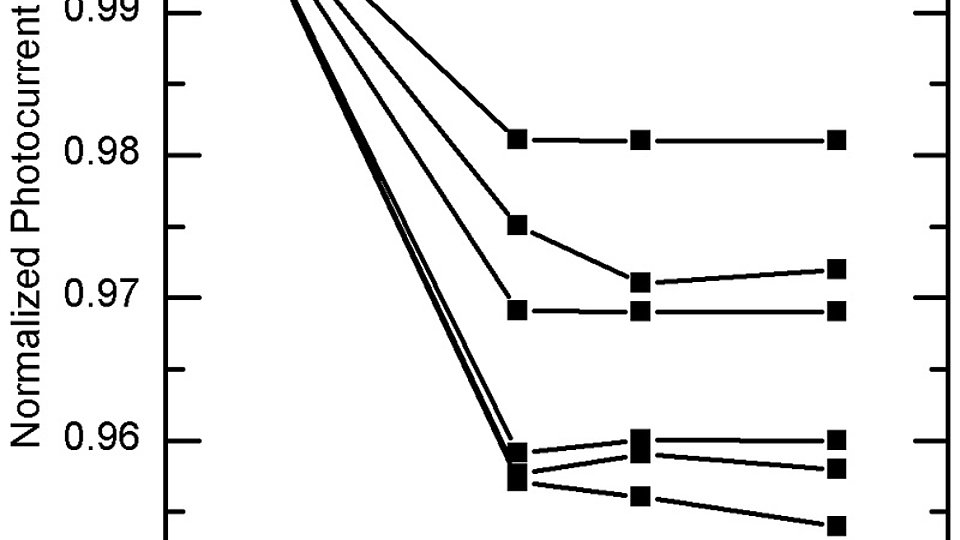Highly reliable silicon carbide photodiodes for visible-blind ultraviolet detector applications
Fig. 2: Normalized photocurrent of SiC UV photodiodes stressed with a low pressure UV-C lamp. For comparison the dashed lines show the behavior of previous commercial 6H-SiC p-n photodetectors.
A growing variety of applications for detectors of ultraviolet (UV) radiation depend on highly reliable and long-term stable detection systems. Such applications comprise food, air and drinking water purification, flame and combustion control as well as chemical and biological analysis or sterilization of biological and medical equipment. In a joint project of FBH, Leibniz-Institute for Crystal Growth, and the Berlin-based company sglux GmbH highly efficient and reliable polytype 4H-SiC p-n photodiodes have been fabricated on n-type substrates with active areas of up to 6x6 mm2. The n-type and p-type layers were epitaxially grown at Leibniz-Institute for Crystal Growth; the devices were characterized and long-term exposed to UV by sglux GmbH.
At FBH, SiC p-n junction photodiodes were fabricated on 2 and 3 inch n-type substrates. Contact printing lithography using a mask aligner has been used for all patterning and alignment steps. Modern and automated equipment has been used for dry- and wet-chemical processing as well as for deposition of metals and dielectrics to ensure best possible process control. The active area of the p-n junction diodes was defined by mesa etching using an inductively coupled plasma (ICP) with Cl2-BCl3 chemistry. The SiC etching technology assured high homogeneity of ± 15 nm over the 3 inch wafer surface and exact control of the total etch depth of 7 µm. Electrical contacts were formed by aluminum-titanium and nickel-chromium alloys on p-type and n-type SiC, respectively. As shown in Fig. 1 the electrical contact at the front has a bonding island in the center (bright). The edge length of the active area of the square chip depicted is 1 mm.
Photodiode chips packaged into a TO housing with an UV transparent window were characterized at room temperature and exposed to high intensity mercury lamp irradiation. The behavior of the photocurrent response under UV light irradiation using a low pressure mercury UV-C lamp (4 mW/cm²) and a medium pressure mercury discharge lamp (17 mW/cm²) has been studied for up to 22 months. The normalized photocurrents of SiC UV photodiodes stressed with a low pressure UV-C lamp and a medium pressure UV lamp are depicted in Figs. 2 and 3, respectively. The devices under test showed an initial burn-in effect, i.e., the photocurrent response dropped by less than 5 % within the first 40 hours of artificial UV aging. Such burn-in effect under UV stress was also observed for previously available 6H-SiC p-n photodetectors (CREE CD‑260‑0.30‑D, on p-type SiC substrates). After initial burn-in no measureable degradation was detected, i.e., no decrease of photocurrent could be measured until now (16,000 hours of irradiation). The aging tests demonstrate the robustness of SiC photodiodes against UV radiation and confirm that the 4H SiC p-on-n photodiodes are suitable for high irradiance UV applications.
This work was partly supported by the Federal Ministry for Economy and Technology based on decision of the German Parliament under grant number KF2194501DB9. Part of the work was funded by the Transfer BONUS program of Berlin's Senate Department for Economy, Technology and Women. Technological support by Frank Kudella and George Brandes is very much appreciated.
Publication
D. Prasai, W. John, L. Weixelbaum, O. Krüger, G. Wagner, P. Sperfeld, S. Nowy, D. Friedrich, S. Winter, T. Weiss, "Highly reliable silicon carbide photodiodes for visible-blind ultraviolet detector applications", J. Mater. Res., 2012, accepted for publication.
FBH research: 12.07.2012


